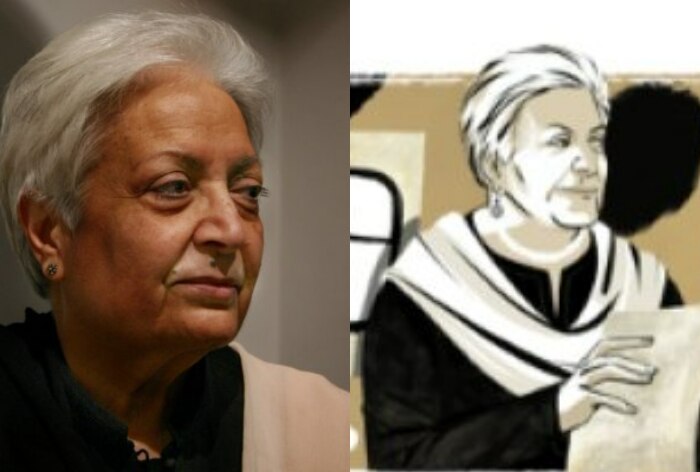A part of the Minimalism Art movement, Indian-American Zarina Hashmi became internationally known for her striking woodcuts and intaglio prints that combine semi-abstract images of houses and cities where she had lived.
Google Doodle celebrated Indian-American artists Zarina Hashmi, who was known for being associated with the minimalist movement. “Illustrated by New York-based guest artist Tara Anand, the artwork captures Hashmi’s use of minimalist abstract and geometric shapes to explore concepts of home, displacement, borders, and memory,” Google Doodle said.
Who Was Zarina Hashmi
A part of the Minimalism Art movement, Zarina Hashmi became internationally known for her striking woodcuts and intaglio prints that combine semi-abstract images of houses and cities where she had lived. Her work often contained inscriptions in her native Urdu, and geometric elements inspired by the Islamic art.
People all over the world continue to contemplate Hashmi’s art in permanent collections at the San Francisco Museum of Modern Art, the Whitney Museum of American Art, the Solomon R. Guggenheim Museum, and the Metropolitan Museum of Art, among other distinguished galleries.
Zarina Hashmi was born on July 16 in 1937 in Uttar Pradesh’s Aligarh. She and her four siblings lived an idyllic life until the partition of India in 1947.
At 21, Hashmi married a foreign service diplomat and began traveling the world. She spent time in Bangkok, Paris, and Japan, where she became immersed in printmaking and art movements like modernism and abstraction.
Zarina Hashmi moved to New York City in 1977 and became a strong advocate for women and artists of color. She soon joined the Heresies Collective, a feminist publication that explored the intersection of art, politics, and social justice.
Hashmi went on to teach at the New York Feminist Art Institute, which provided equal education opportunities for female artists. In 1980, she co-curated an exhibition at A.I.R. Gallery called ‘Dialectics of Isolation: An Exhibition of Third World Women Artists of the United States’.This groundbreaking exhibition showcased work from diverse artists and provided a space for female artists of color.






















0 Comments